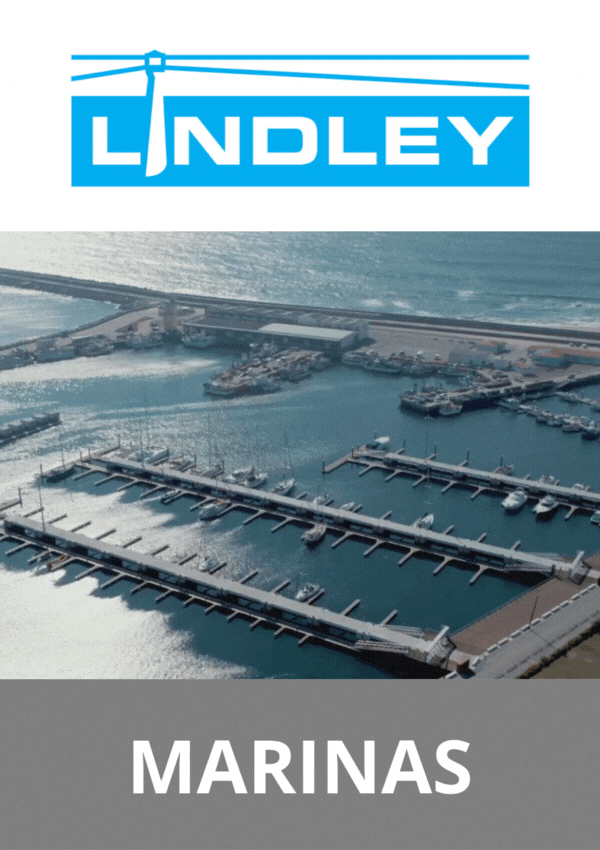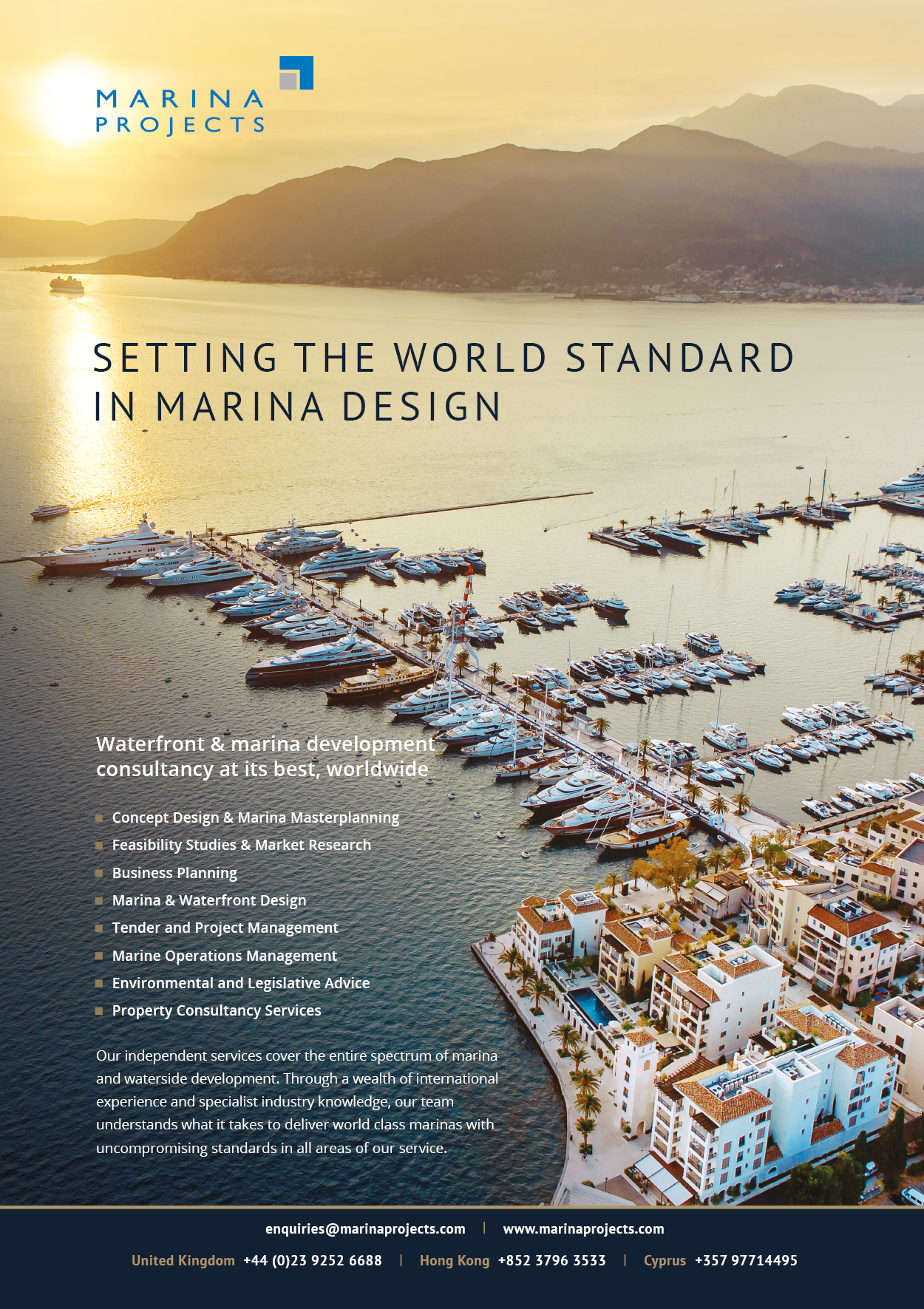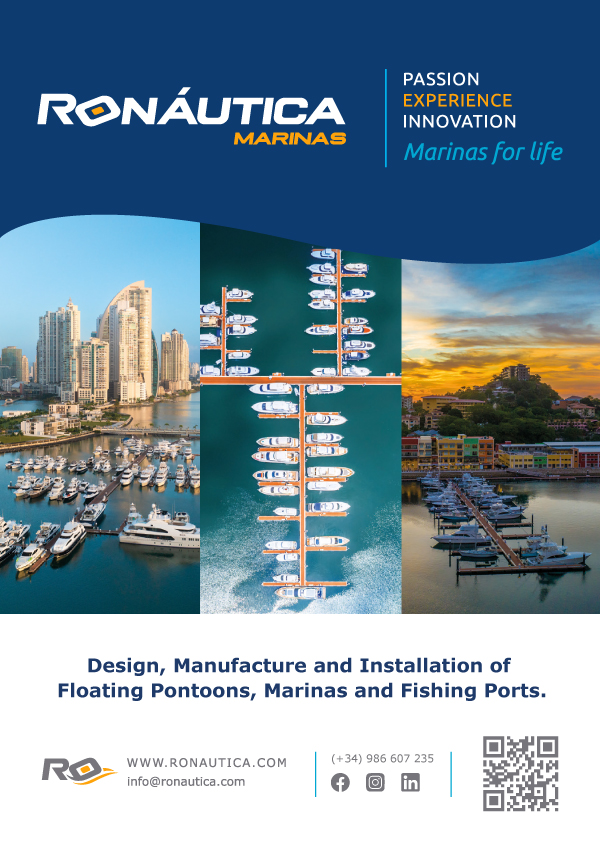Developing the Eagle Float
Long in the forefront of plastic float manufacture, Arkansas-based Hendren Plastics continues to expand the market reach of its premium Eagle Floats product line. Jim Hendren, owner and president, talks shop.
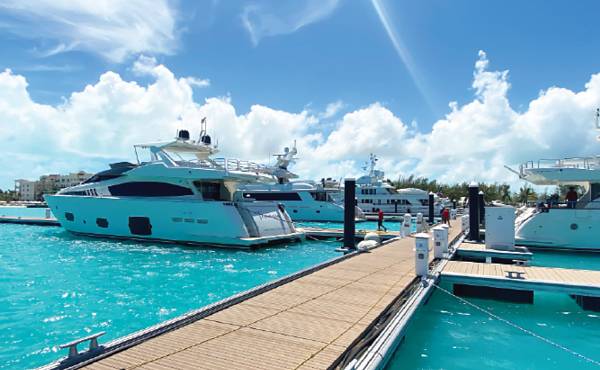
Eagle Floats support docks, gangways and fingers at marinas in overseas boating hubs such as Turks & Caicos
A: My dad bought a very small plastics plant in our home town of Gravette in 1967. I was four years old so I grew up in the business. He and I started my current company, Hendren Plastics Inc. in 1984 as I was graduating from college. However, I decided to join the Air Force and see the world. I was fortunate to get to fly the F-15 Eagle and that is where the name for “Eagle Floats” came from. I came back from active duty in 1992. He and I ran the company together for a few years and then I purchased it from him in 2006. We have been making plastic here for over 30 years now.
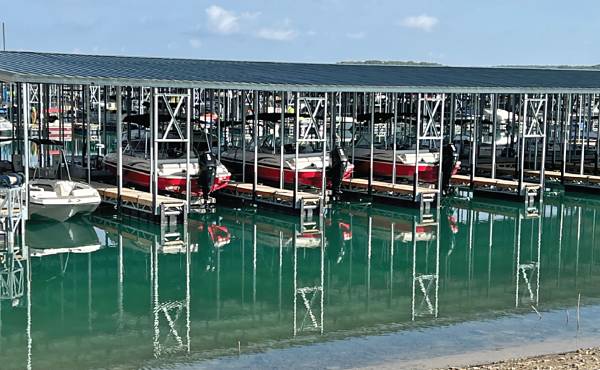
Eagle Floats on home territory in the USA
A: Prior to the encapsulation requirement, we provided white foam for the market clear back to the 1960s. We watched as white foam that had been in the water for over 25 years was removed and replaced with Eagle Floats. The white foam had taken on a lot of water but was still providing sufficient buoyancy. It truly is a great product for flotation. After regulations required encapsulation, we waited a few years to determine the best method and technology. We made our first Eagle Floats in 2008 and are now making over a thousand a day.
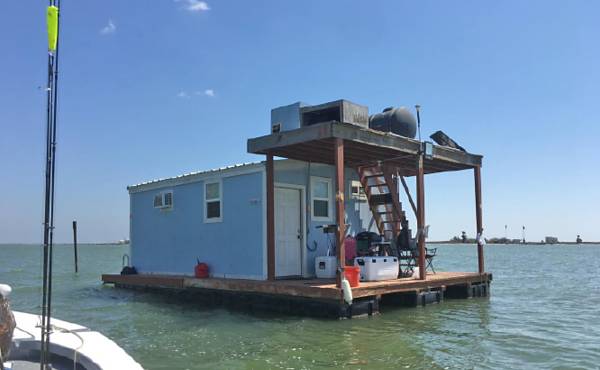
Marine structures, such as this cabin, remain afloat on Eagle Floats.
A: The resin quality has improved significantly for both polyethylene and expandable polystyrene. This makes it a little easier to provide consistently high quality. We’ve also seen widespread incorporation of computer devices for controls and equipment management that also have greatly improved quality.
Q: You must have invested a lot in maintaining the best manufacturing equipment. How has this changed over time? Do you expect equipment to develop further? If so, how?
A: When we first began the company we did not have enough capital to buy new equipment so we bought mainly used equipment and refurbished it. Beginning in 2000, we were able to buy new equipment for all of our processes. While the capital costs are high, the efficiency, quality and capacity are incredibly better than older technology.
The change in technology is very rapid in terms of equipment and it is always occurring. We strive to stay current. For example, we just added a completely new computerised control panel to a 20 year old block mould. The mechanical parts are still solid, but with new controls it is now performing like a completely different machine. We also build a lot of our own custom equipment, including adding programmable logic controllers to many basic machines to improve performance and consistency.
Q: Why do you believe your floats are the best?
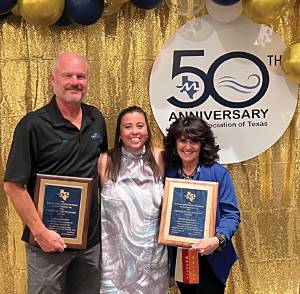
Hendren Plastics president, Jim Hendren, and vice president sales, Susie Wallace, proudly display their latest industry awards from the Marina Association of Texas.
Q: While no one can ever guard completely against freak accidents, there have been some disturbing pollution issues with polystyrene escaping from plastic floats. Is the quality and/or arrangement of the polystyrene a risk factor or is it down to shell impact strength? What types of quality/strength tests do you undertake to minimise the risk of pollution?
[p5]A: We strive hard every day to make sure that even if a float is punctured or damaged, the EPS foam core is fused properly preventing the escape of beads into the water. We do this using a proprietary steaming system that measures the parameters every 50 milliseconds to make sure the steaming process is correct. If the foam is fused properly there is almost no chance of pollution of the water by loose beads. That also prevents loss of buoyancy and performance of the float.
Q: Are there any feasible alternatives to the use of expanded polystyrene for floating dock systems? Is there any ongoing R&D in this field?
A: We have tried a couple of different products, including a resin called ARCEL that is not prone to flaking. We have found nothing as convenient for attaching and as durable as encapsulated EPS foam (Eagle Floats). I’m sure research will continue, but compared to the days of unencapsulated white foam flaking off and being destroyed by animals or abrasion, the encapsulated float is a huge improvement.
Q: What significant factory expansion have you undertaken?
A: Since making our first Eagle Float in 2008, we have invested nearly $7 million in additional equipment and plant expansion. In the last two years we have added an additional 15,000ft² (1,400m²) of manufacturing space and both a new carousel and shuttle rotational moulding machines. These were some of the largest machines in the industry and nearly doubled our production capacity. This expansion has cut our backlog by two thirds and given us the ability to make even larger parts.
Q: What is your market reach? Do you have plans to extend this?
A: Worldwide – we are always looking to expand our reach and increase our overseas business.
Q: What are the biggest challenges currently facing manufacturing companies in the USA?
A: Labour shortages. Last year the supply chain was a real problem but it seems to have settled down. Every other manufacturer I talk to has the same struggle as we do of finding sufficient workers to meet the demand.

